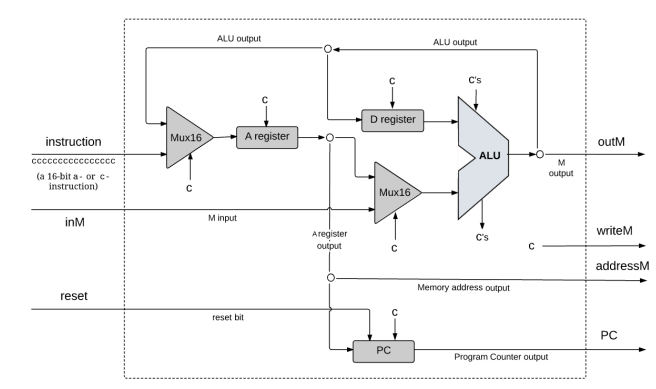I'd like to ask how the command flows let's say in the pseudo-code
n = 17
In Hack language, it would be:
@17
D = A
@n
M = D
Just confused how the value 17 would go through the registers, into ALU, etc., let alone the rest of the variables? Thank you.
